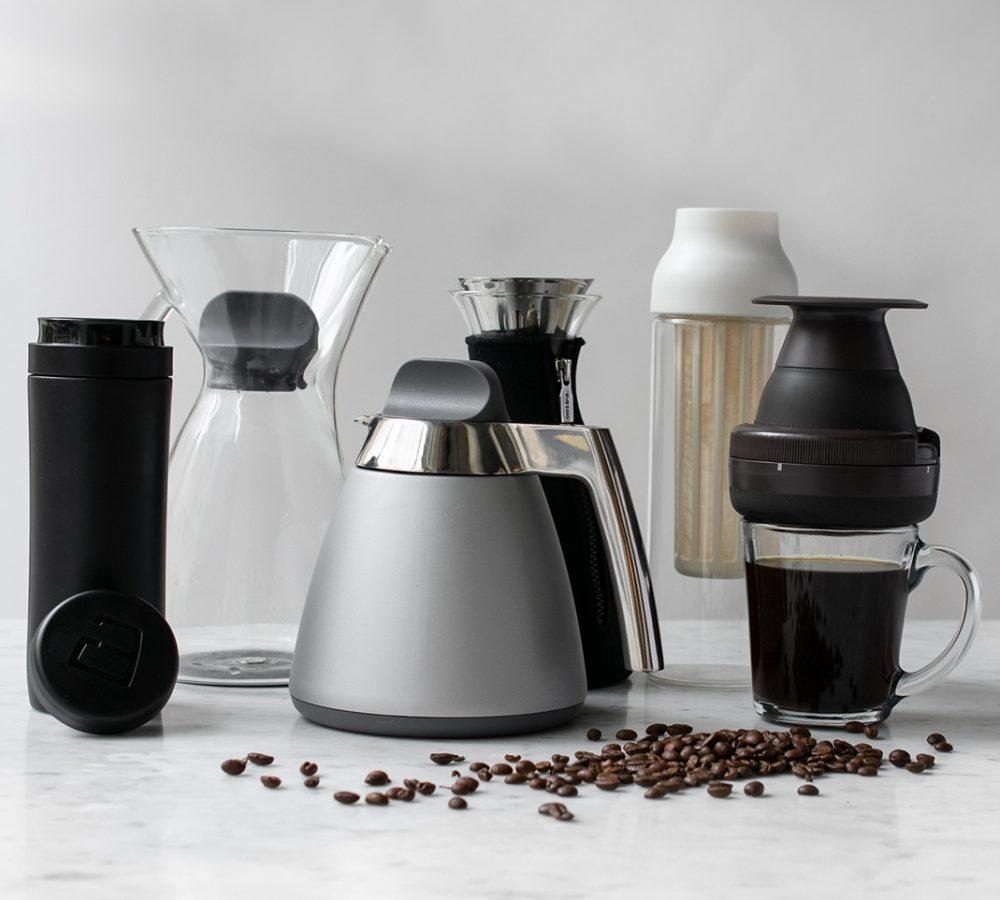If you’re a plug-and-play drip drinker, you’re missing the ineffable pleasure of analog coffee. It’s hard to beat the ritual, the clarity of flavor and the hands-on control that a simple brewing device can provide.
We’ve collected a range of equipment that represents new ways of brewing, hybridized approaches and perfect renditions of classics.
In addition to analog, we’ve discovered the ultimate drip coffeemaker, the American-made Ratio Eight. It’s a high-tech pour-over machine with push-button convenience and stunning, low-fi looks. In head-to-head kitchen testing, the Ratio brewed the best cup we’ve tasted—complex, smooth and sweet. (Does it fully justify its stunning price tag? Well, that depends if you are willing to pay for form and function.)
Now, a word about making coffee.
The most important variable in a great cup of coffee is the beans themselves. Some beans are picked and then stored in warehouses in burlap sacks for up to a year.
Others are frozen after picking. Some coffee has been roasted just before you use it and other bags of coffee have been sitting on a shelf for weeks after roasting. (Try our 177 Milk Street Blend, roasted to order in Portland, Oregon. The beans are not roasted until we receive your order.)
In terms of methods, there are many factors. The temperature of the water when it hits the grounds, blooming of the coffee before extraction, length of extraction time, etc. And some methods deliver richer, darker brews such as French press while others will give you a less extracted brew such as electric drip.
The science of coffee making is based on how many of the over 800 flavor compounds are extracted. (Wine has roughly 200 compounds.) Too few and the coffee is uninteresting; too many and the overextraction leads to bitterness. In addition, the roasting process creates volatile compounds that affect flavor. (That’s why home roasting is a dicey process—it has to be done just right for optimal flavor.) A great coffee machine or method will extract just the right number of compounds and do it gently.
One other note. We recommend fresh beans ground just before brewing. We strongly recommend burr-style grinders, which produce a very even grind for consistent results (Wirecutter.com recommends models from Baratza; our food editor, Matt, has owned the Virtuoso model for 10-plus years and uses it daily). Or for a fully hands-on experience, try an inexpensive manual grinder, which is not as odious as you might think.
These devices were tested by kitchen staff at 177 Milk Street using the same batch of our own Milk Street Blend of coffee.
Palmpress
The Palmpress is an ingenious new device that is a collapsible French press. Packed up, the durable plastic device looks like an over-sized hockey puck, but unscrew the lid and it pops open to reveal a silicon funnel. Add coarse-ground coffee to the marked line, pour in boiling water, give a stir, and wait 4 to 6 minutes before inverting the press over a mug and pressing to extract. The flavor is bright and strong, just the way we like it.
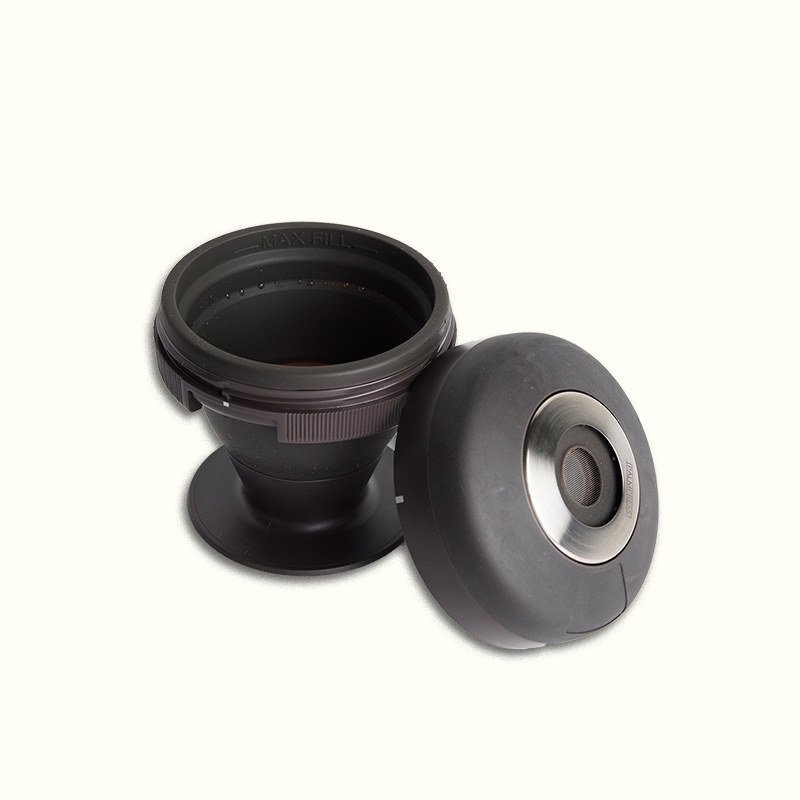
Perhaps best of all, clean-up is a breeze: just scrape out the grounds and then give it all a rinse. There are no filters or pods to dispose. Our food editor, a coffee fiend, always packs one for travel, and the kitchen staff prepare their morning brew in it. Note: It produces one cup of coffee at a go.
Kitchen Notes: The coffee had a medium body, it was well extracted and had good flavor. We used a medium coarse grind. Be sure to watch the timing to avoid over-extraction.
Giannini Moka Pot
Unless you’re willing to invest in a big-ticket espresso machine, a stovetop espresso maker, otherwise known as a moka pot, can provide the best bang for the buck for espresso-style coffee at home. Generations of Italians will agree. The thick, syrupy body, rich flavor and depth produced by a simple stovetop maker falls someplace between espresso and an Americano—far more satisfying than your average pot of drip. Fine-ground, espresso-style coffee is gently packed into the filter, which is sandwiched between the water reservoir on the bottom and the carafe on top. When heated, the boiling water is forced up through the filter into the carafe, which is the reverse of an espresso machine.
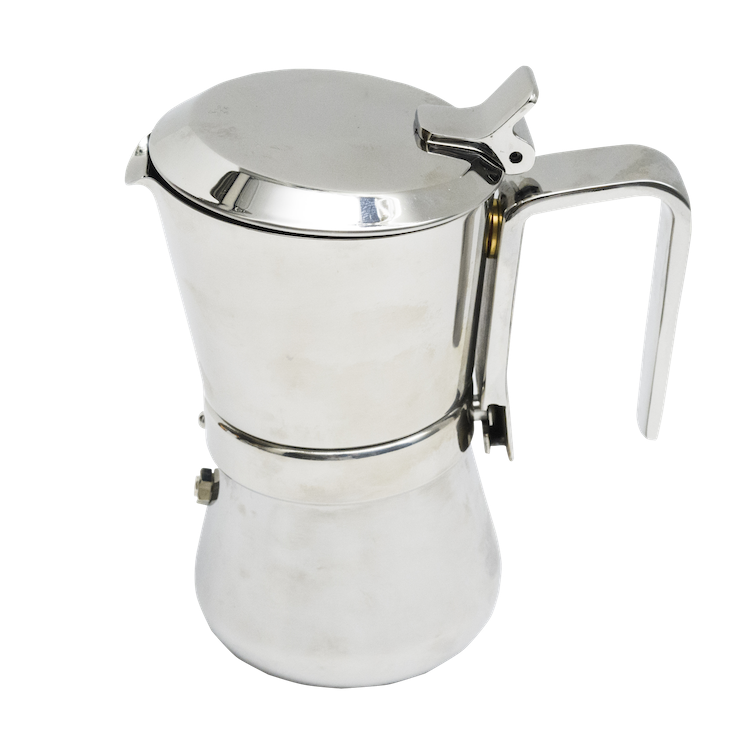
Made from heavy-gauge stainless steel (not the usual aluminum construction), the Giannini pot is absurdly sturdy and built to last a lifetime. It operates via a simple press-fit lever-locking system, which is far easier to use than the more typical screw-together system. (Coffee grounds invariably get stuck in the threads, which must be chased out for a secure fit.)
Kitchen Notes: Using a medium-fine grind, we got piping hot coffee with full body and strong flavor, closer to an espresso than regular American coffee. Much cheaper than any espresso machine, it delivers a cup less intense than espresso but every bit as satisfying. Be sure to watch it brewing to avoid scorching the base of the pot after the water evaporates.
Eva Solo CafeSolo
The CafeSolo is a new take on French press, one of our favorite coffee-making methods. Just spoon ground coffee into the flask, pour over hot water, stir (they provide a stirrer), pop in the filter funnel with a flip-top lid, wait 4 minutes, and start pouring. The CafeSolo has a four-cup capacity. It also comes with a neoprene “coffee cozy” that zips up and keeps the coffee warm. And, unlike a French press fitted with a mesh strainer, this system is easy to clean.
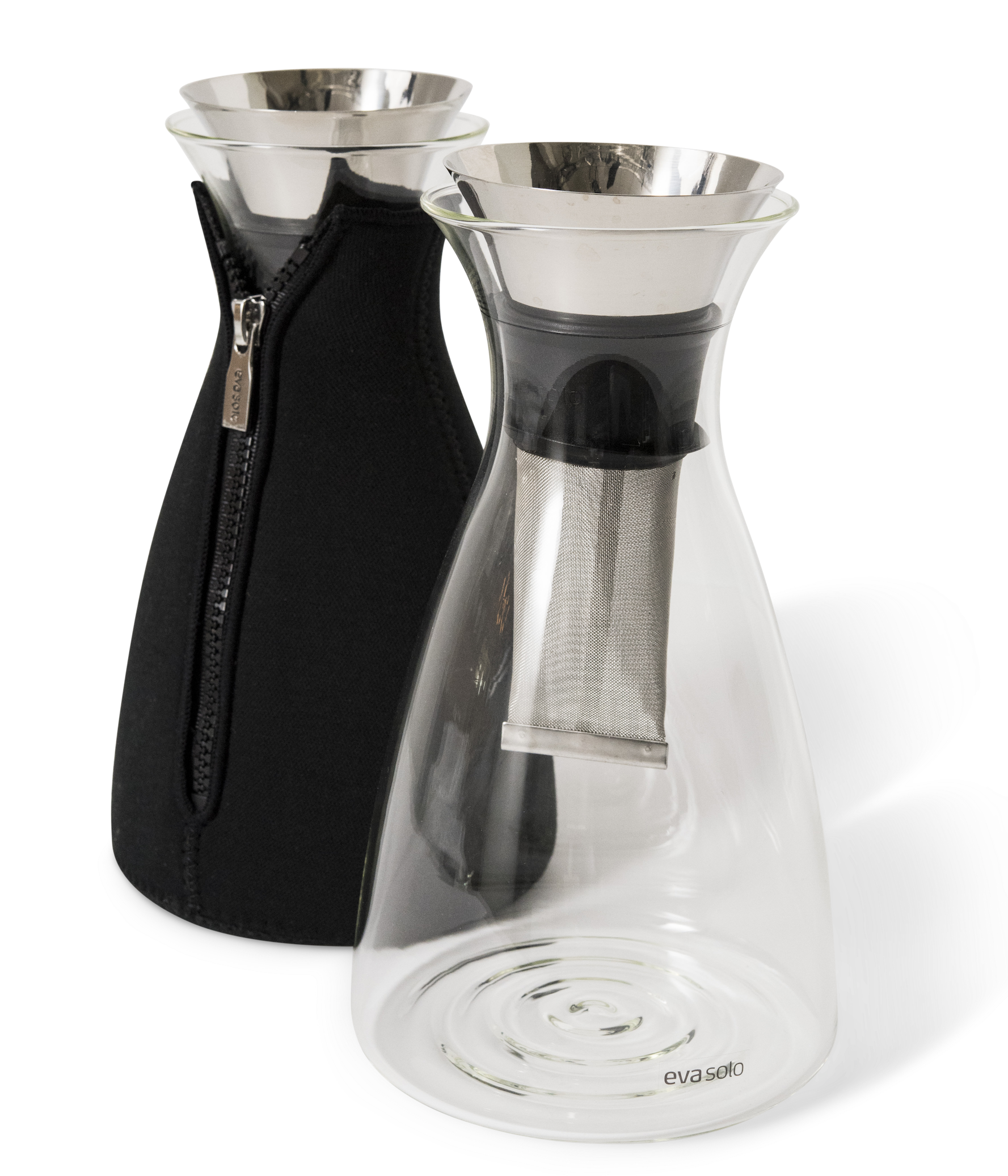
Kitchen Notes: This device scored in second place in terms of flavor, just under the very expensive Ratio 8. The coffee was clean and full-bodied. Since you don’t “press” the coffee using this device, the resulting cup is less bitter. It drinks as smoothly as tea. You do have to pour the coffee into a thermos or coffee mug after the brew time to avoid over extraction. Could be easier to clean.
Kinto Iced Coffee Brewer
With summer’s warm weather upon us, it’s time for cold brew. This cleanly designed, durable glass carafe is fitted with a fine-mesh insert to hold and filter a liter’s worth of rich, deep cold coffee without a hint of bitter. The filter pulls right out and the coffee can be refrigerated in the carafe. A unique top allows for spill-proof pouring from any angle. The Kinto also works for cold-brewed tea. It takes eight hours to brew.
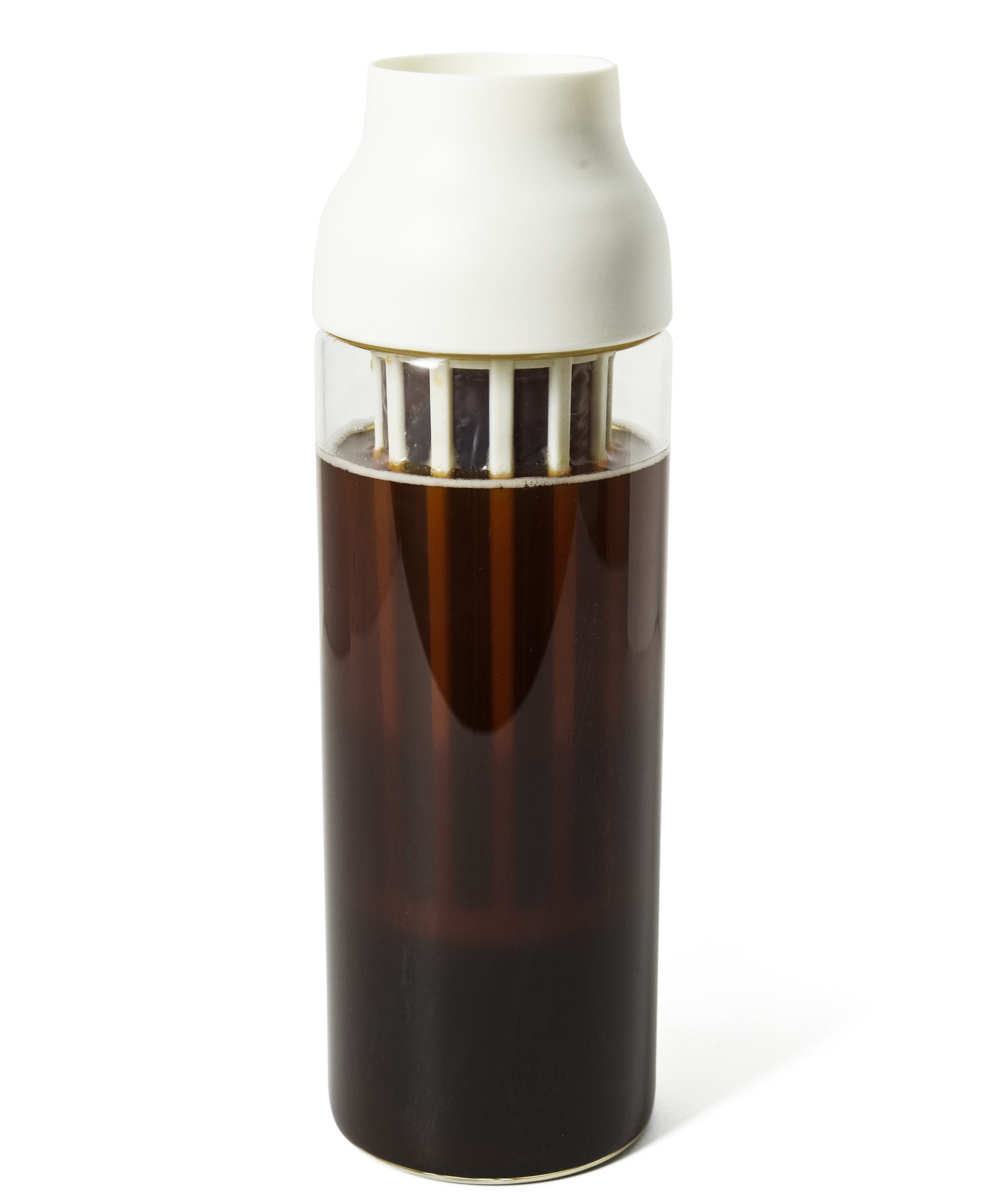
Kitchen Notes: We found that the container was on the small side given the long brew time and requires a fair amount of beans for the amount of coffee brewed. The recommended amount of coffee produced a light cup; we increased the amount for a second test and it was more to our liking. One advantage to cold brews is that the coffee can be made ahead and stored in the fridge.
Ratio Eight Coffee Brewer
Portland’s Mark Hellweg founded Clive Coffee, a specialty retailer of high-end espresso equipment, before leaving the firm and launching Ratio, arguably the most beautiful automatic coffee maker we’ve ever seen. Think of it as push-button, perfect pour-over—the elegant Scandinavian-style design hides the high-tech technology to maintain a lo-fi appearance suitable for any kitchen. There’s no need to contend with a host of buttons or settings—the machine does it all for you, from proper water temperature to blooming the grounds and even water disbursement. It’s designed for partial batch brewing from 16 to 40 ounces, so feel free to brew just what you need. The “shower head” delivery system mimics a manual pour-over, and the machine also gives the grounds time to bloom before adding the rest of the water. The stunning glass carafe is tough borosilicate glass, which can be gently heated on the stovetop.
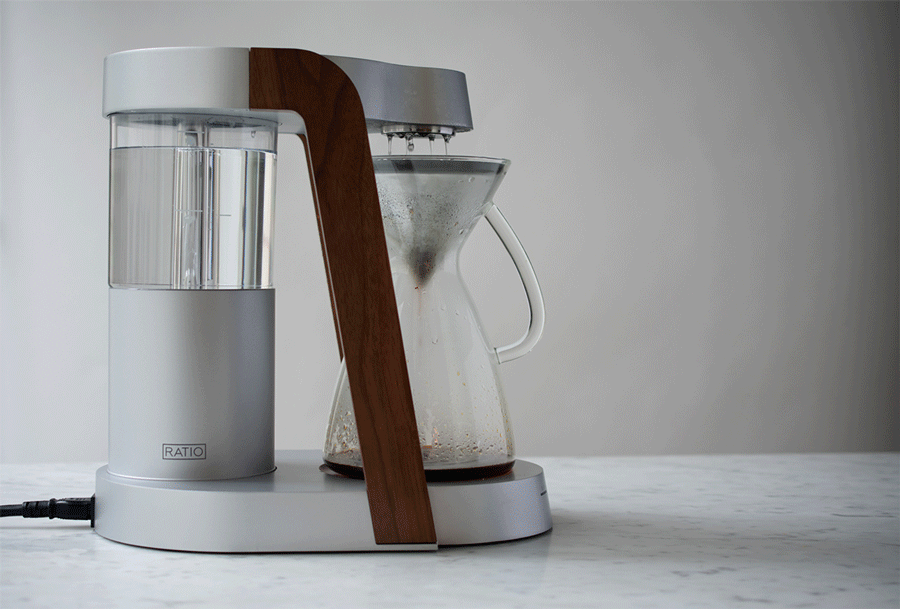
The Ratio doesn’t have a hot plate, which tends to “cook” coffee and ruin its flavor, rather than keep it warm). However, they do sell a separate thermos which is gorgeous and, not cheap, about the cost of a good electric drip coffee maker. We are offering two packages for the Ratio Eight coffeemaker. Both come with the Ratio Kone filter, an ultradurable, micro-perforated stainless-steel filter. For the deluxe package, we’ve included the thermal carafe, which will keep coffee hot for up to four hours. As an added bonus, the porcelain dripper fitted with the Kone filter onto the carafe can be used as a stand-alone manual pour over.
Kitchen Notes: We found that the Kone filter makes a much better cup than paper filters. With the special filter, the coffee was clean, sweet and bright and lacked bitterness. It won our taste test hands-down. It is as close as you are going to get to a café-worthy pour-over. It also looks great, not like a hulking piece of hardware store machinery that sits on your counter like a cheap toaster, but the good looks and great coffee do come at a price. If you love your morning coffee, however, it will pay for itself in pure happiness over time (or make a terrific wedding present). We could not recommend this device more highly.
Espro Travel French Press
ESPRO has reinvented the French press. They’ve maintained the fundamental design and functionality, but added a highly engineered and patented double-micro filter system that separates the pressed coffee grounds from the water to eliminate further extraction. This traps the coffee grounds or tea leaves for a cleaner brew and easier cleanup. This Travel Press (they also make full-size nontravel models) takes advantage of their double-filter system so you can have a “French press on-the-go.” Here’s how it works. Add 20 grams of coarse-ground coffee (about 1½ tablespoons), boiling water, and wait 4 minutes. Press the plunger and then screw on a drip-proof lid and take the whole thing with you. It really is a French press on the go. In addition, the metal carafe does a very good job of keeping the coffee hot. You can also use it like a regular French press and pour the coffee into a small thermal carafe once the brewing is done or simply drink it then and there.
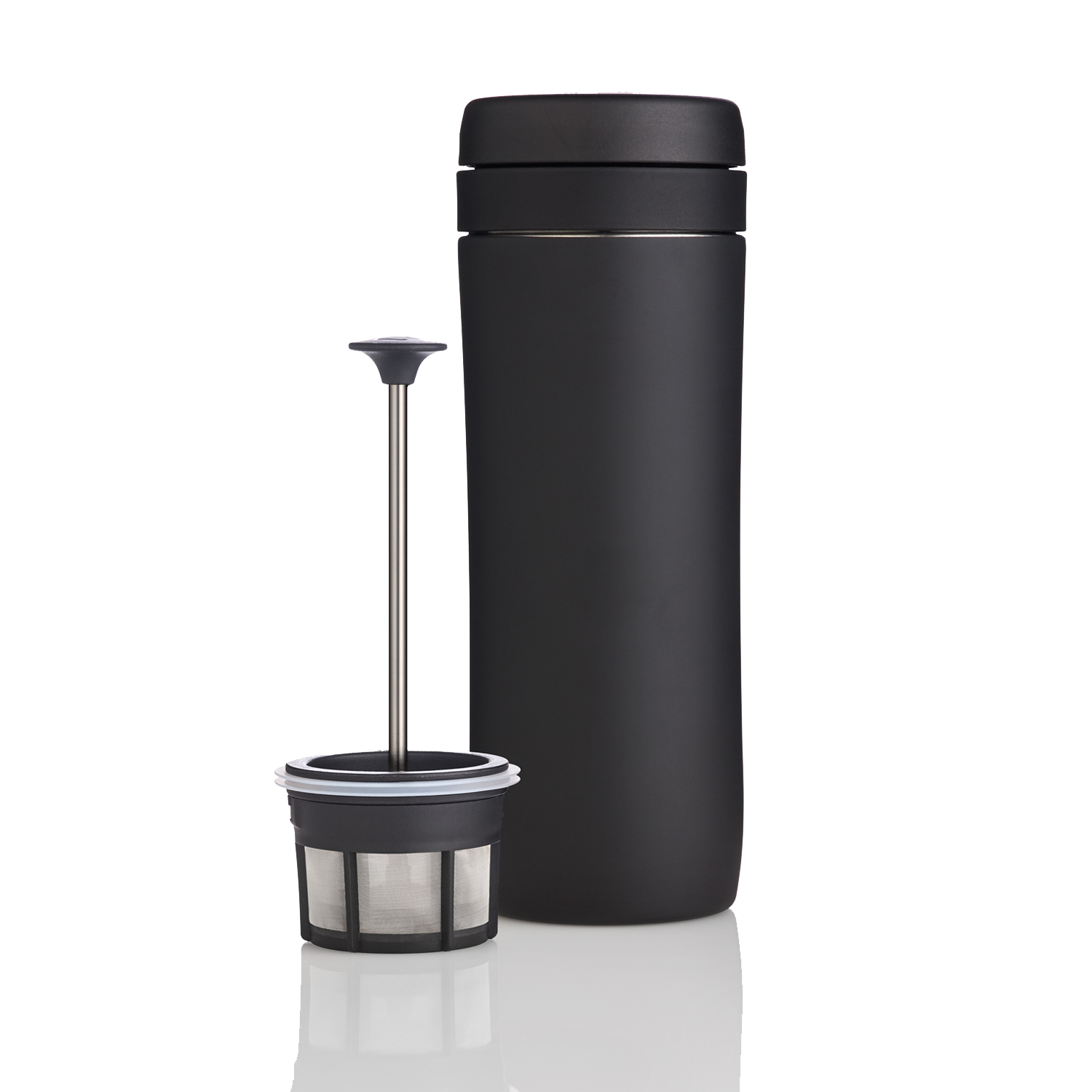
Kitchen Notes: This is definitely a one-person device since the amount of coffee produced is small, a cup or two. However, you get a great, full-body cup like you would from a standard French press. The special filter system does a better job than other French presses at avoiding over-extraction, but this device still produces a “French press” cup of coffee; darker, richer. That being said, using lighter-roast beans and a slightly shorter extraction time overcomes this issue if you prefer a less robust cup. At this price, it is a great option for on-the-go coffee, infinitely better than the capsule machine in your hotel room and also great for a road trip or for camping.
Milk Street 177 Blend Coffee
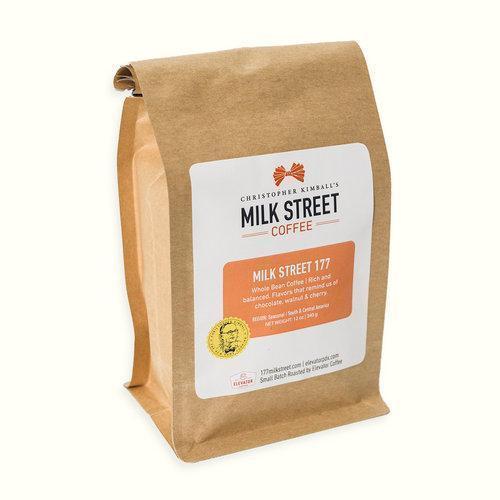
After tasting coffees from roasters around the country, we finally settled on a partnership with Elevator, a small roaster in Portland, Oregon, to produce a custom blend for us from the freshest beans. The bright, clear flavors and precision of their roasting thoroughly impressed us. When you order our blend, you can be sure that the beans have been freshly roasted and shipped out immediately. Our inaugural 177 Milk Street coffee is a do-it-all blend that works across brewing methods and accommodates a variety of palates. The medium roast mix of Central and South American beans packs a full, rich body and a balanced nutty, cocoa-rich flavor. It’s a solid, full-bodied blend that’ll be terrific brewed in your standard coffee maker, pour over, French press, Italian-style Moka pot or cold brew. Best of all, when you reorder, you will get consistent results, cup after cup.
